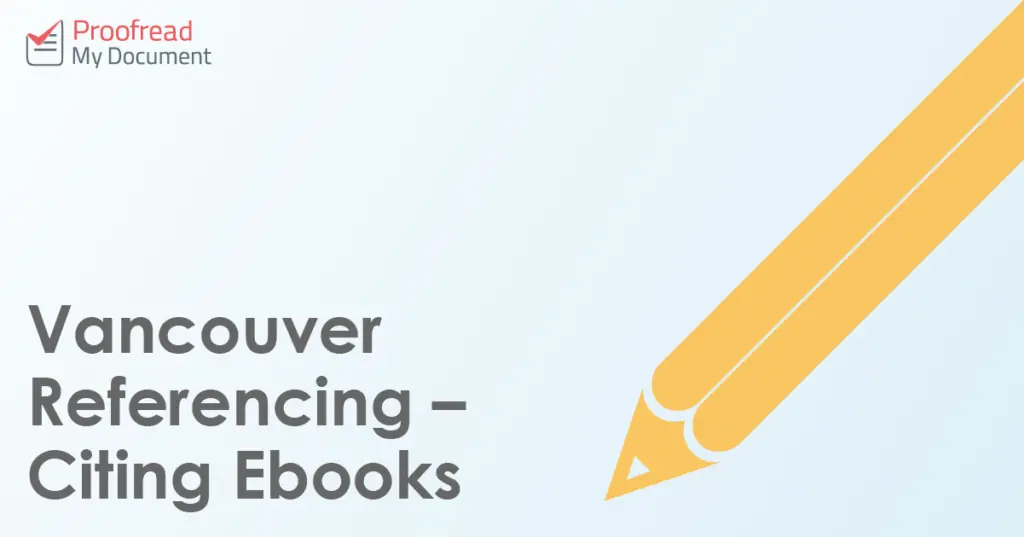We’re not ready to write off paper quite yet, but we have to admit that ebooks have made life much simpler for academics. They’re often cheaper, for one thing. And they’re much, much easier to carry around all day. But how exactly do you cite ebooks using Vancouver referencing?
Citing an Ebook with Vancouver Referencing
Vancouver referencing is a number–note system. Citations are therefore given as a number in the main text of your document, with source details included in the reference list at the end.
Sources are numbered in the order they are first cited in your work. The first source you cite, then, will be indicated with the number one, the second with number two, etc. For example:
Paranormal activity has been recorded throughout history (1). Dr Spengler (2) writes that ‘this is the last unexplored frontier in science’ (p. 4).
Here, we have two texts cited. As shown above:
- Give citations in brackets at the end of a clause unless the author is named in the text, in which give it immediately afterwards.
- When quoting a source, include a page number after the quote.
And if you need to cite the same source more than once, all you need to do is use the same number as on the first citation.
Adding an Ebook to Your Reference List
The reference list is a list of all cited sources in your document. These should be listed in the same order as they are first cited in the text, so the entry number will match the citations.
The information required for an ebook is as follows:
Find this useful?
Subscribe to our newsletter and get writing tips from our editors straight to your inbox.
- Citation number (i.e. the number used for the first citation)
- Author surname and initials
- Book title
- Book format (i.e. internet)
- Place of publication
- Publisher
- Year of publication
- Date ebook was accessed
- A URL or database where the book can be found
The basic format for referencing ebooks is therefore:
(Citation Number) Surname Initial(s). Title. Edition. Place of publication: Publisher; year Available from: database or URL [date of access].
In practice, then, the reference list entry for an ebook should look like this:
(1) Venkman P. The Science of Extrasensory Perception. New York: Columbia University Press, 1984 Available from: www.paranormalarchive.net/books/venkman-science-extrasensory-perception.html [Accessed 17 July 2018].
Check Your Style Guide!
Vancouver referencing can vary slightly between versions (e.g. how citations are presented). In this post, we’ve used a generic Vancouver footnote style. However, you should check your style guide (if available) to make sure this is consistent with the system your university uses.
And if you’d like an expert to check the referencing in your work, along with every other aspect of your writing, just let us know.



